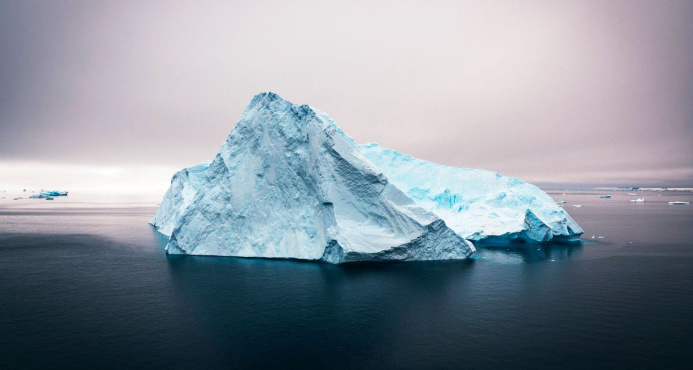Climate change: Satellites record history of Arctic and Antarctic melting
18.08.2020 | 09:41 |Twenty-five years of satellite observations of the European Space Agency (ESA) have been used to reconstruct a detailed history of Antarctica’s ice shelves. These ice platforms are the floating protrusions of glaciers flowing off the land.
As a whole, since 1994, they’ve shed close to 4,000 gigatons, an amount of meltwater that could all but fill America’s Grand Canyon. But the innovation here is not so much the fact that the shelves are losing mass – we already knew that; relatively warm ocean water is eating their undersides. Rather, it is the finessed statements that can now be made about exactly where and when the wastage has been occurring, and where also the meltwater has been going.
Some of this cold, fresh water has been entering the deep sea around Antarctica where it is undoubtedly influencing ocean circulation. And this could have implications for the climate far beyond the polar south.

“For example, there’ve been a couple of studies that showed that including the effect of Antarctic ice melt into models slows global ocean temperature rise, and that can actually lead to an increase in precipitation in the US, explained Susheel Adusumilli from the Scripps Institution of Oceanography in San Diego.
Adusumilli and colleagues analysed all of the observations made by ESA’s long series of radar altimeter missions. These spacecraft have tracked the change in thickness in Antarctica’s ice shelves since the early 1990s.
Combining their data with ice velocity information from other sources, and the outputs of computer models, the Scripps group has gained a high-resolution view of the pattern of melting during the study period.
“We see that melting is always above the steady state values,” Mr Adusumilli told BBC News. “You need some amount of melting just to keep the ice sheet in balance. But what we’ve seen is an amount of melting by the ocean that is more than is needed to keep it in balance.”
The fascinating aspect to this study is that the scientists can also now trace precisely where at depth the melting is occurring. Some of these floating platforms of ice (the biggest is the size of France) extend many hundreds of metres below the sea surface.
The researchers can tell from the satellites’ data whether the wastage is happening close to the thinnest parts of the shelves or at their fronts, or deep down in those places where the glacier ice coming off land first becomes buoyant and starts to float.
Thinning ice shelves do not contribute directly to sea-level rise. That is because the floating ice has already displaced its equivalent volume of water. But there is an indirect consequence. If the shelves are weakened, the land ice behind can flow more quickly into the ocean, and this will lead to sea-level rise. This is happening, and has been measured by other satellites.

Milne Ice Shelf: Arctic ice split
Located on the northern margin of Canada’s Ellesmere Island, Milne Ice Shelf in the Arctic split a couple of weeks ago to form a free-floating bloc some 80 sq. km in area. By 3 August, this berg, or “ice island”, had itself ruptured in two, with both segments then seen to drift out into the Arctic Ocean.
Ellesmere Island was once bounded by extensive shelves that had melded into a single structure. At the beginning of the 20th century, this covered 8,600 sq. km. But by the turn of the millennium, a rapidly warming climate had reduced and segmented the floating ice cover to just 1,050 sq. km.
Further break-up events in 2003, 2005, 2008, 2011 and 2012, and now in 2020, mean the shelf area is currently under 500 sq. km.
 Milne itself now measures only 106 sq. km.
Milne itself now measures only 106 sq. km.
The pictures from the Californian Planet Company were acquired on 26 July (“before”) and 31 July (“after”). Interesting to note are the numerous melt ponds that cover the surface of the shelf. The presence of such liquid water can be problematic for ice platforms.
If it fills crevasses, it can help to open them up. The water will push down on the fissures, driving them through to the base of the shelf in a process known as hydrofracturing. This will weaken an ice shelf.












